The season of Bunuru
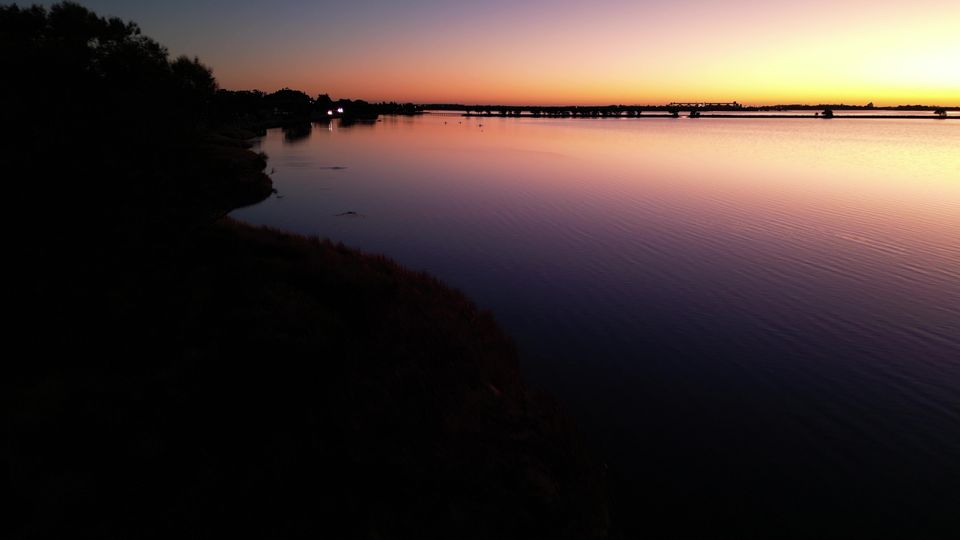
In the south-west of Western Australia the Noongar people follow a yearly calendar with six seasons: Birak, Bunuru, Djeran, Makuru, Djilba and Kambarang.
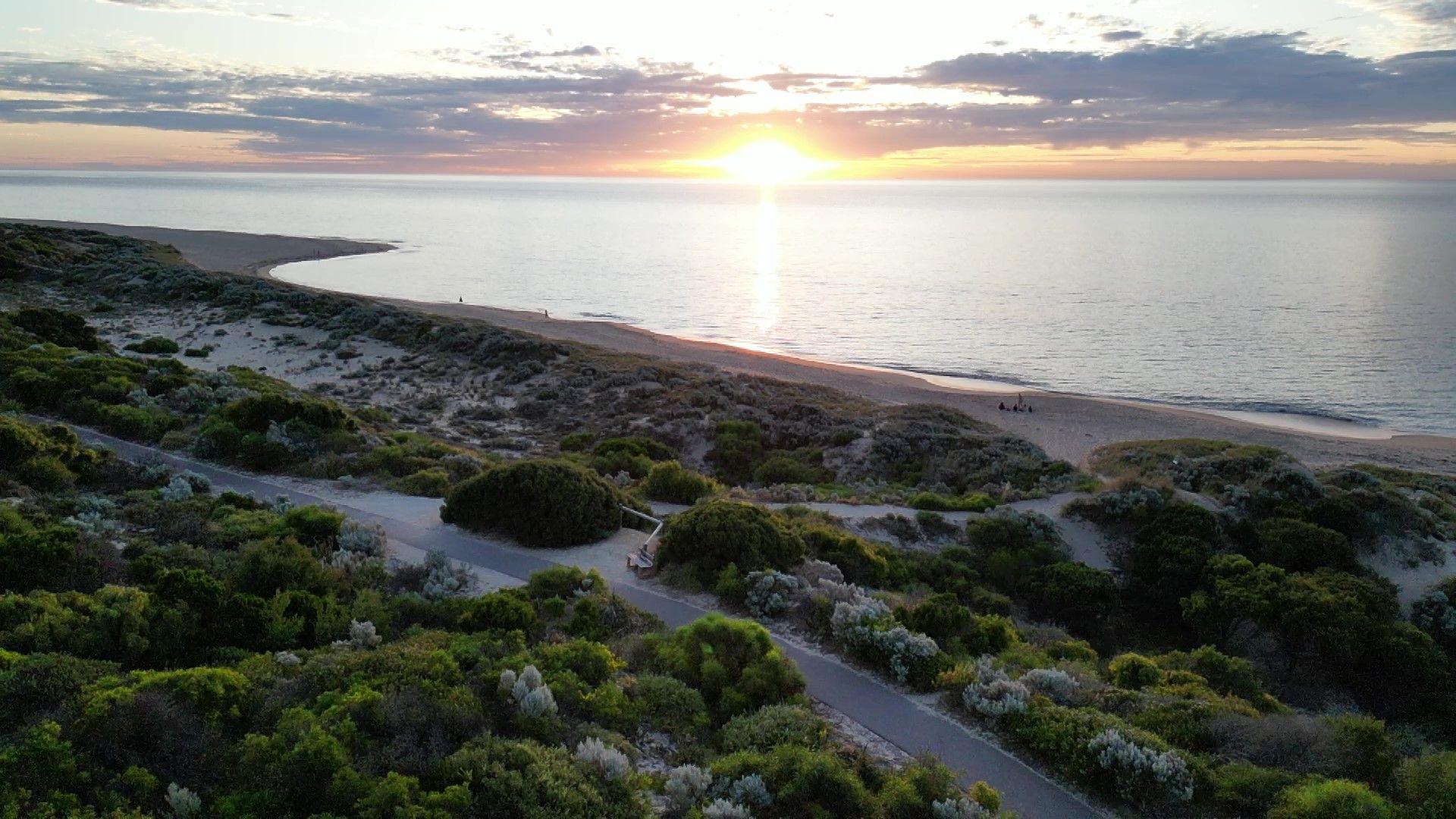
Bunuru is the hottest part of the year, around February and March. Watch the second episode of my series on the Noongar seasons here:
Signs of Bunuru
Bunuru is known as the hot summer (in contrast to the cool summer of Birak) and the time of adolescence. It's traditionally the time to live by the coast, enjoying the plentiful freshwater and seafood available. The hot easterly winds still blow in the morning and get cooled by the westerly offshore breeze in the afternoons.
The white flowering gums (jarrah, marri and tuart) are in full bloom and the female zamia palms produce their huge seeds that change colour from green to a ripe red.
In my nature journal
Weather
There was a hot period at the end of February and again at the end of March. We experienced two storms in early March as well, with rain and lightning. The westerly seabreeze comes in late some days so the heat hangs around and everything is quiet and still, waiting for the cool change. We've passed the equinox so the sun rises later and sets sooner. Beautiful pastel sunsets still mark the day's end.
It felt like we didn't really get the full blast of summer (heatwave conditions) that we typically might - but it stayed warm into April. The flies weren't that bad this year either, I noticed.
Trees and flowers
The grasses and bush are now yellow and dry. The tuarts flowered their white blossoms and now the marri trees. I can't say I've spotted it on the jarrah. My basil was a battle all summer, constantly trying to flower. The swamp paperbarks also displayed white blossoms. Another gum tree is flowering bright yellow from red nuts and I want to find out what species it is - it's quite striking. Turns out it's eucalyptus erythrocorys (illyarie).
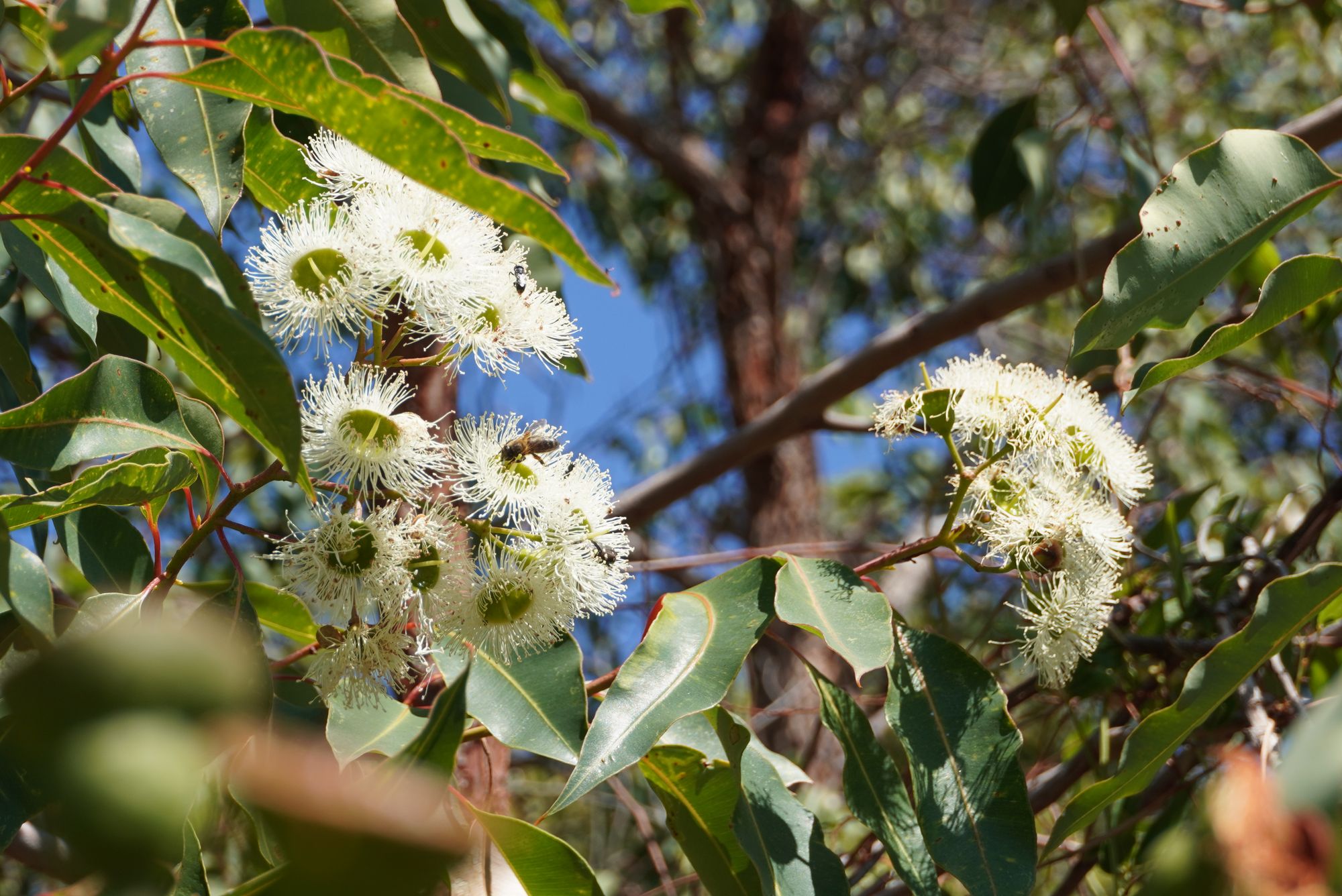
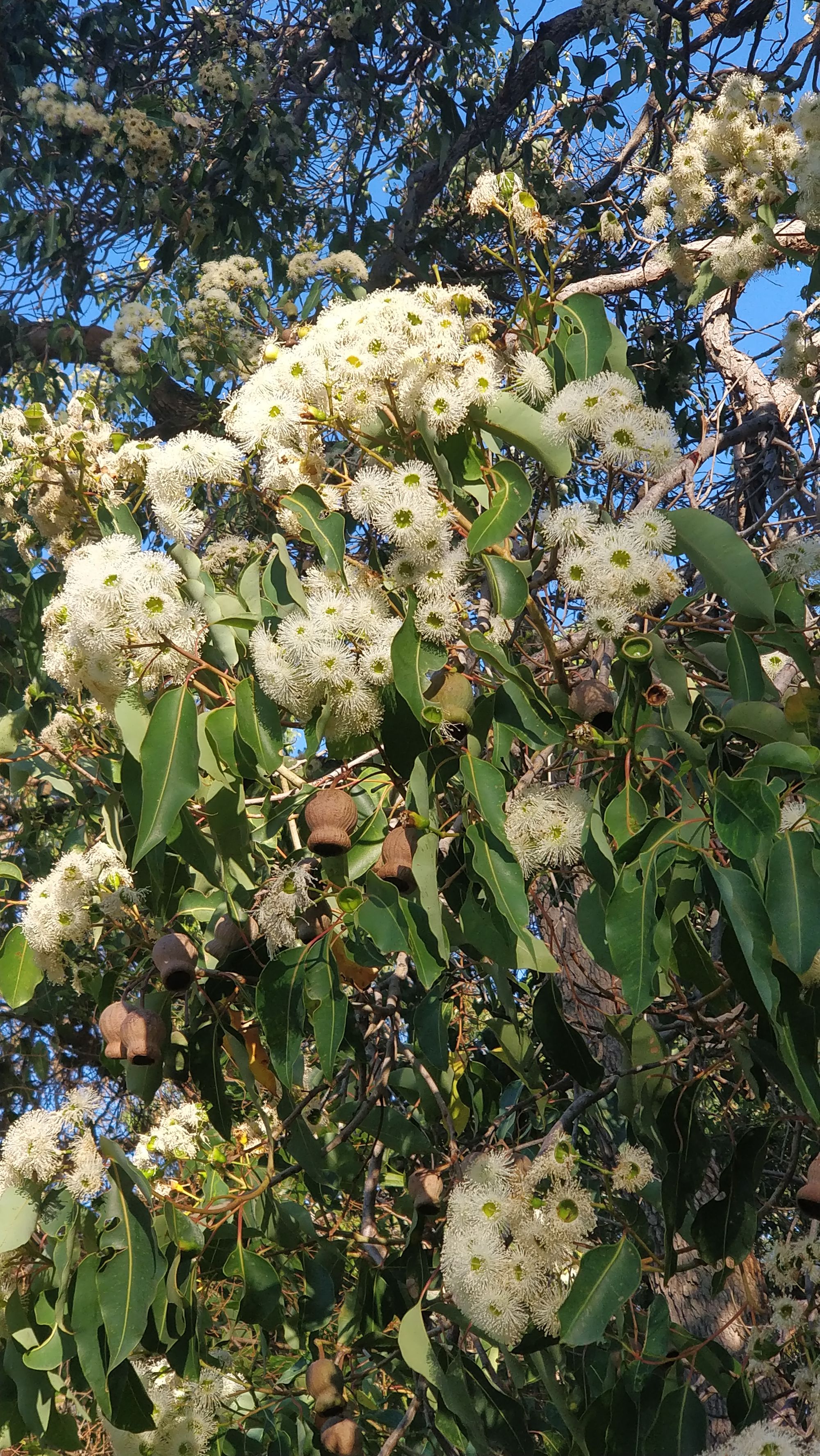
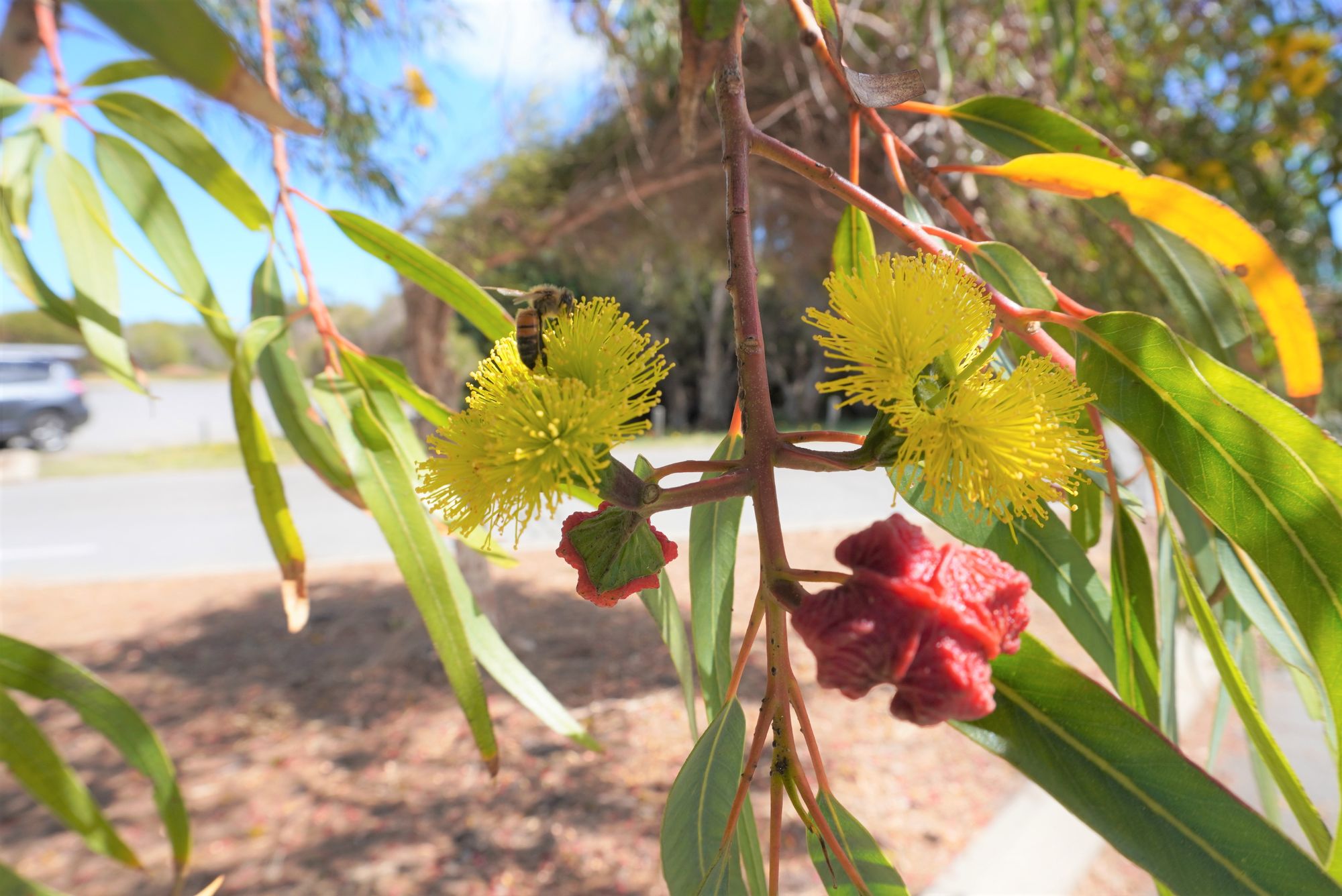
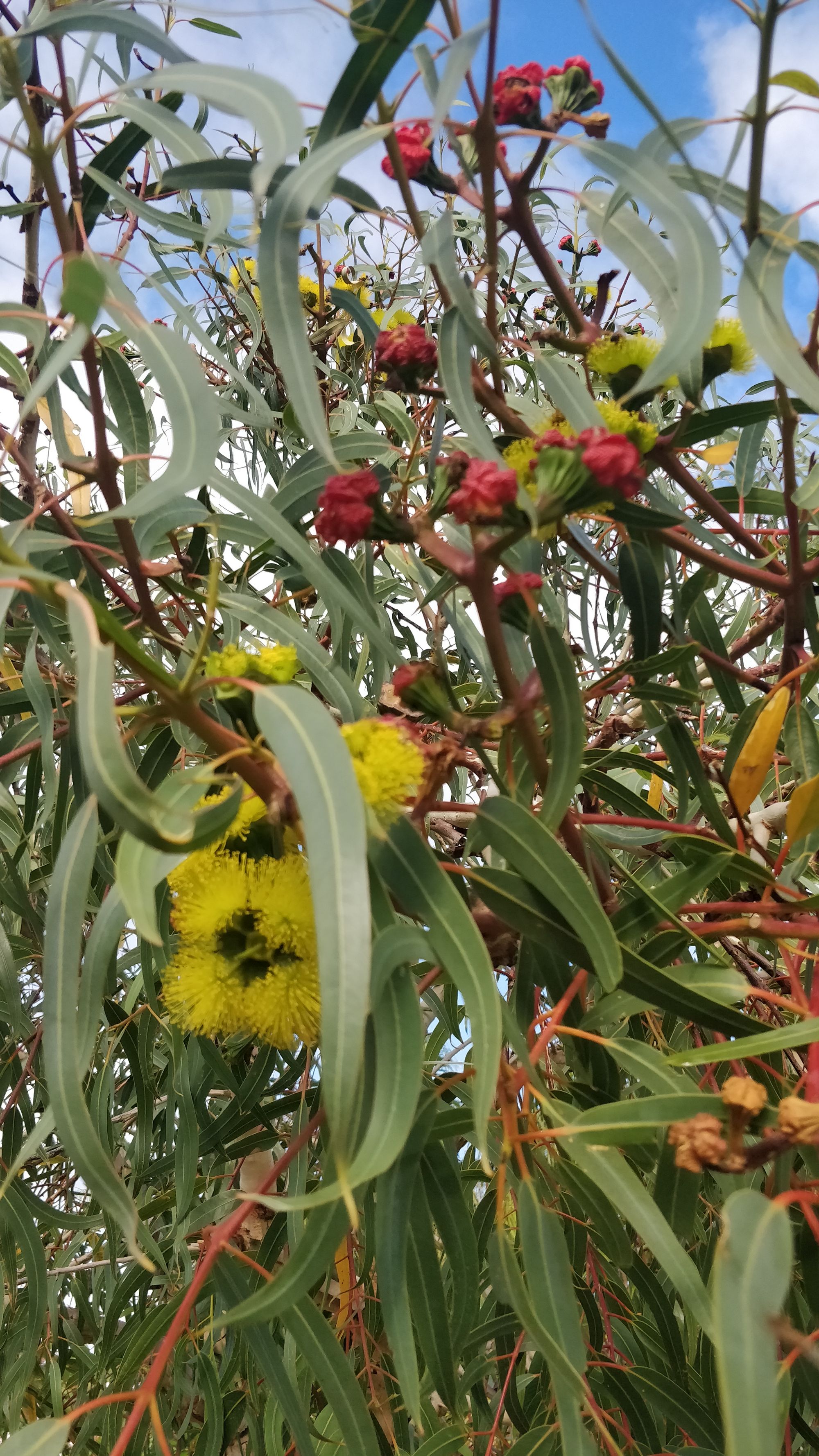
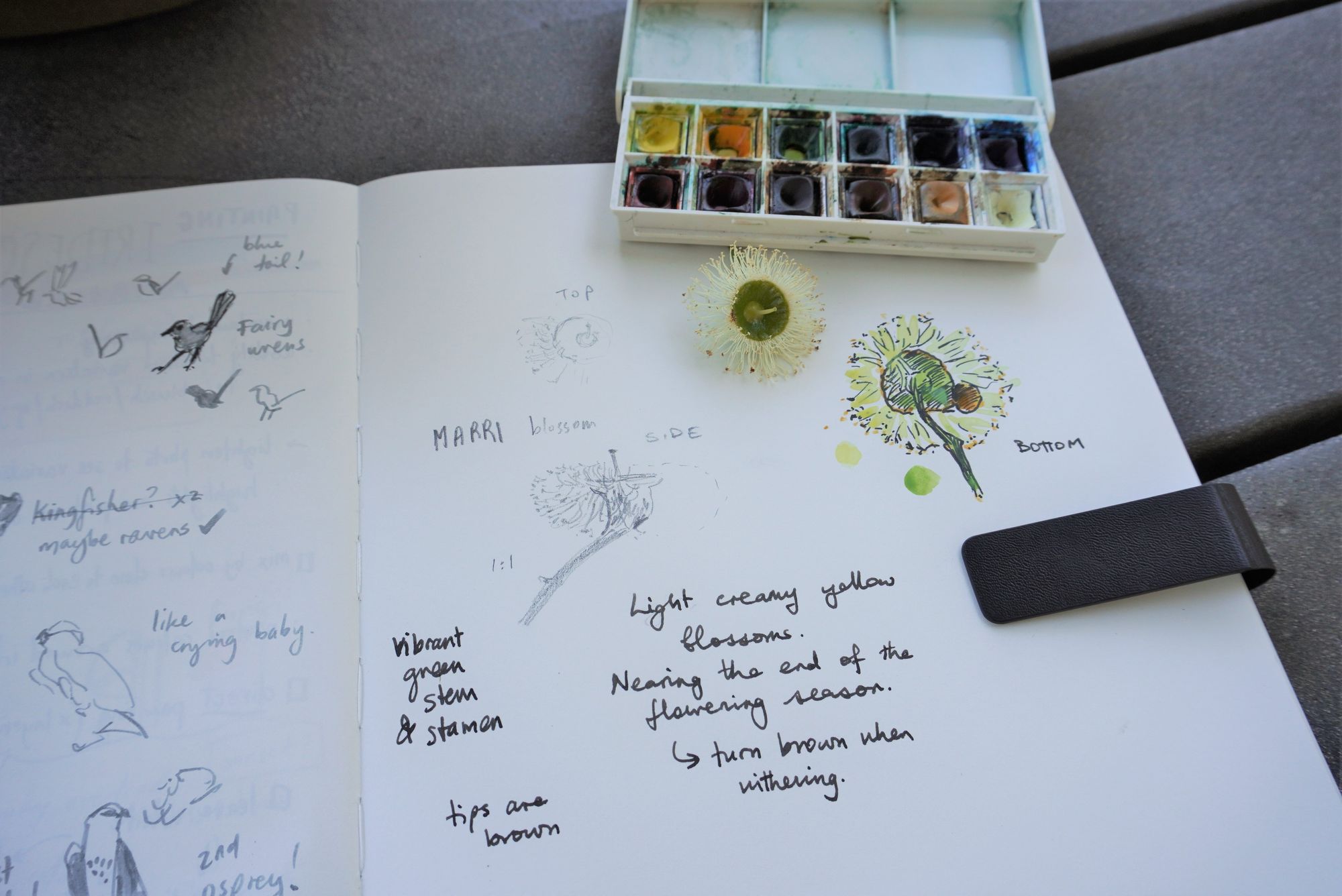
Birds
The rainbow bee-eaters have left the wattle tree behind our house that they used frequently until now, but there are still plenty of other birds around. One morning after my nature walk challenge we returned to see a family of magpies all perched on the antenna - 7 of them! Usually, they don't hang around our house but prefer the bush or park.
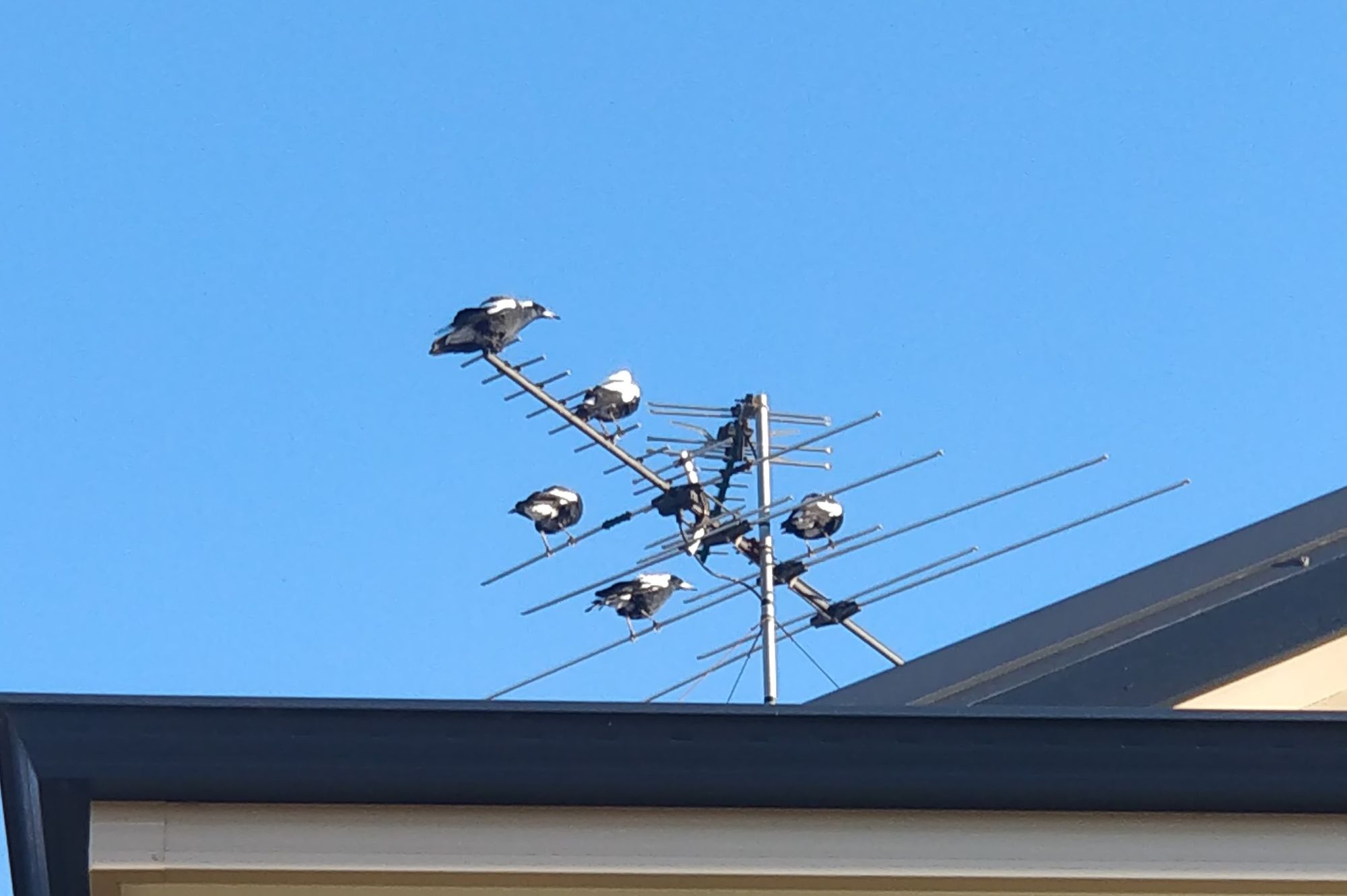
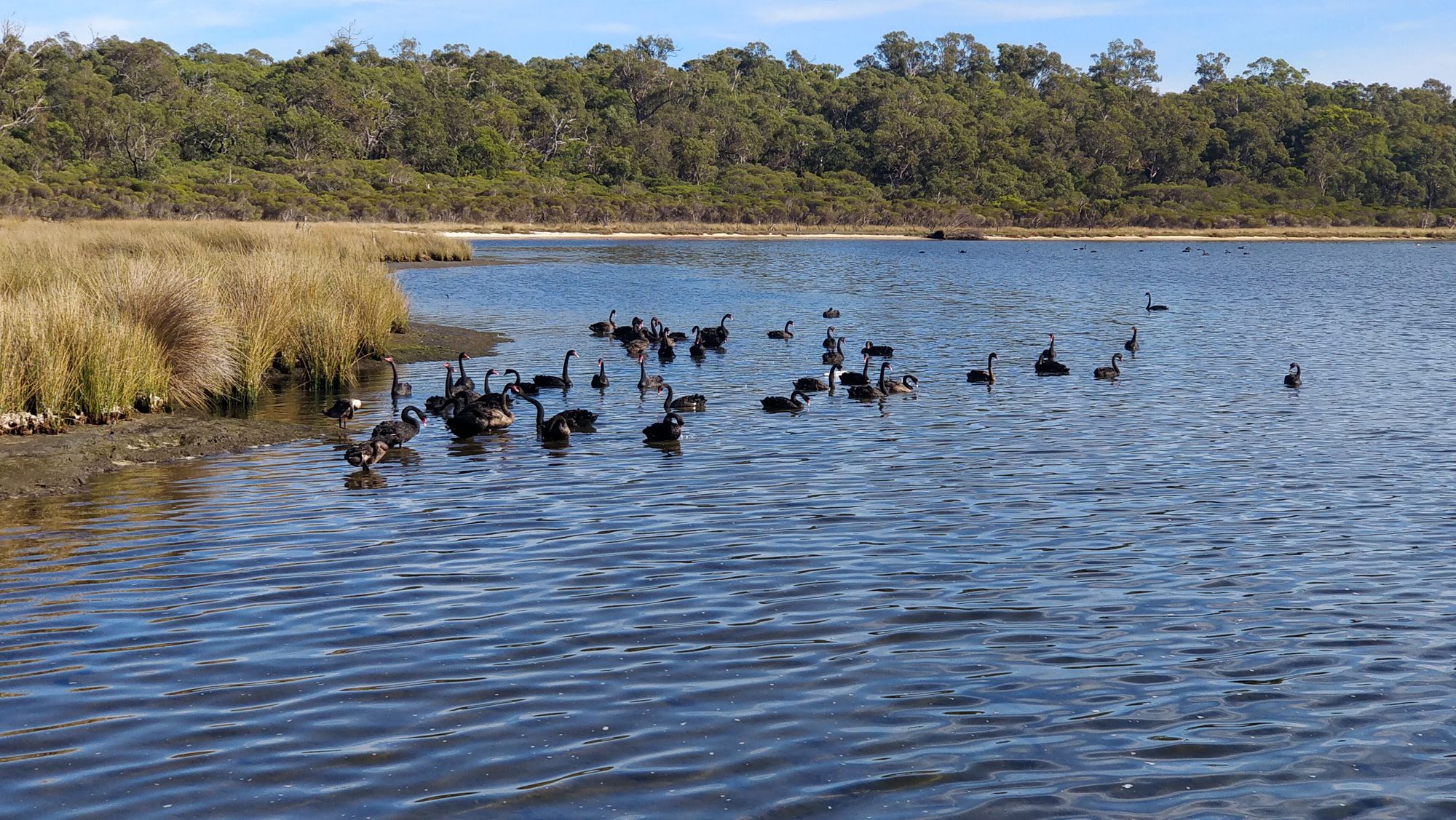
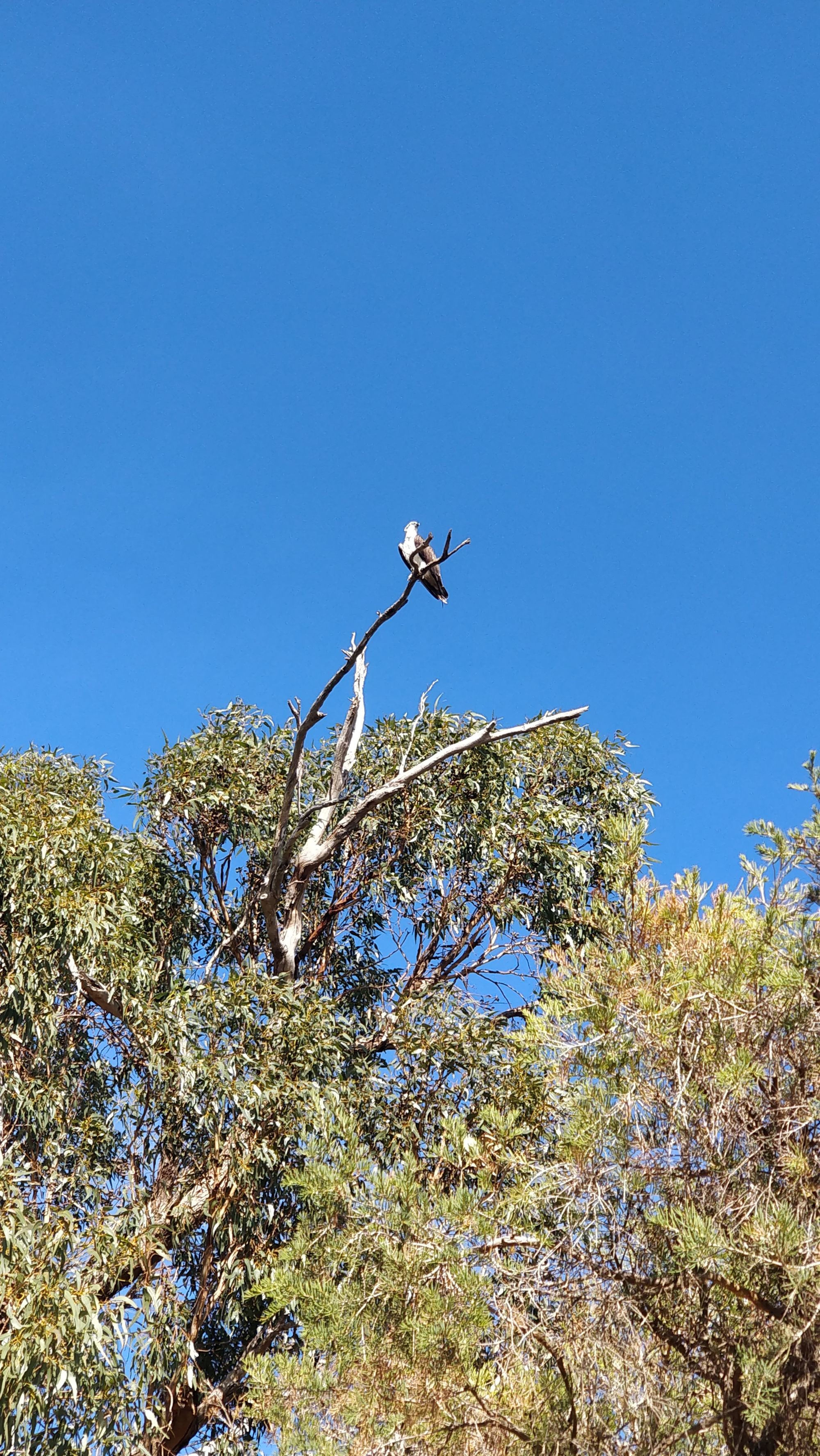
By the estuary, the black swans still congregate (with a couple of pelicans in their vicinity) and their young have almost fully grown their black plumage. One morning we felt lucky to spot a sacred kingfisher on the powerlines nearby. Until recently the young osprey chick could still be heard in the nest and its (tired) parents seen nearby, but on our last walk there was no sign of any of them - has the chick finally left the nest? On later visits there have been multiple osprey around the area.
In early March we noticed that a laughing dove had finally succeeded in building a nest in the tree out the front yard and then there were 2 small white eggs. Unfortunately, we were gone a few days and on our return found the remains of the eggs on the grass below the nest and no sign of the doves. Perhaps a neighbour's cat managed to attack it, as one had been hiding in the bushes nearby in the days prior and that evening there were two yowling around the tree and sniffing the eggshell remains.
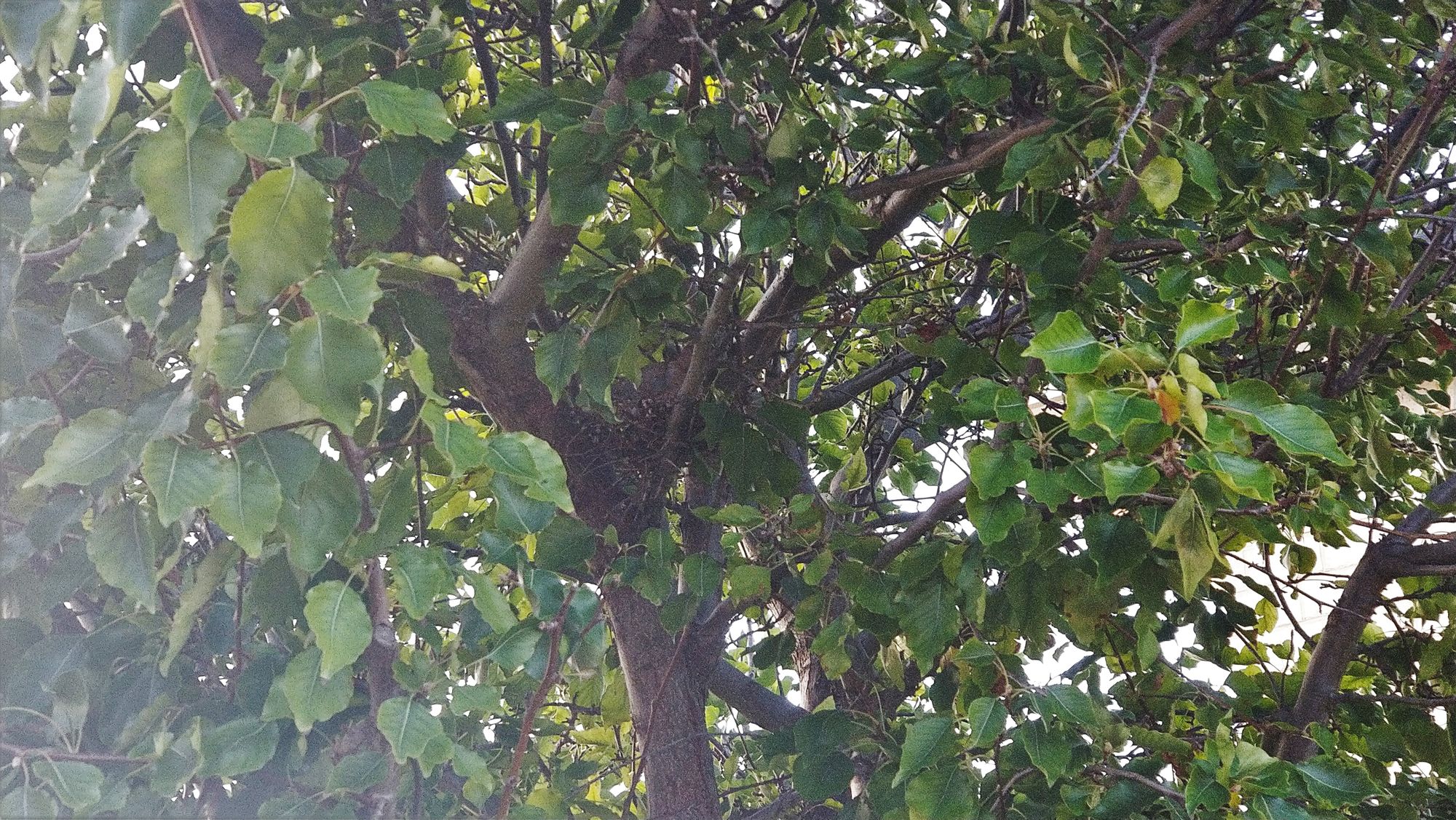
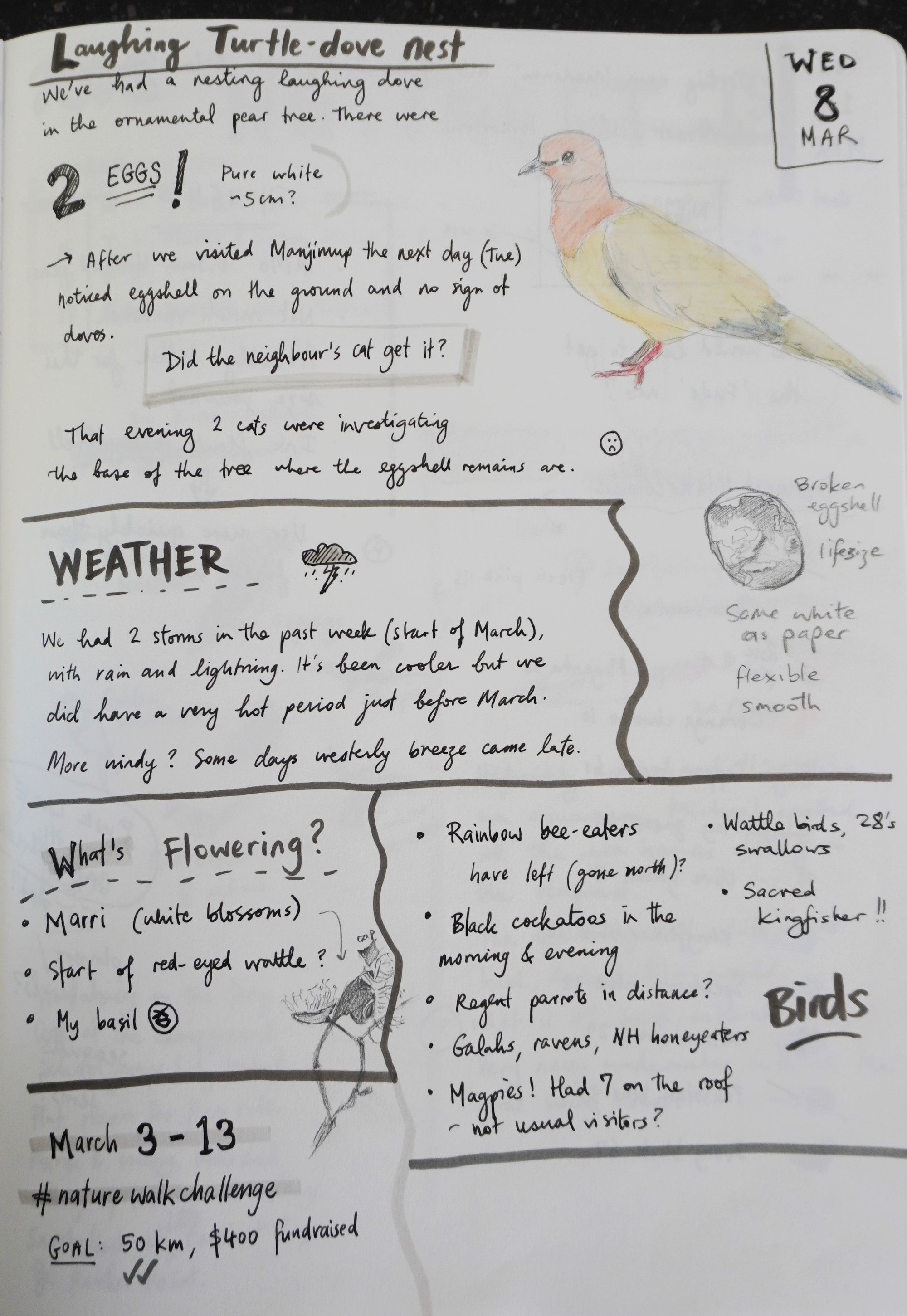
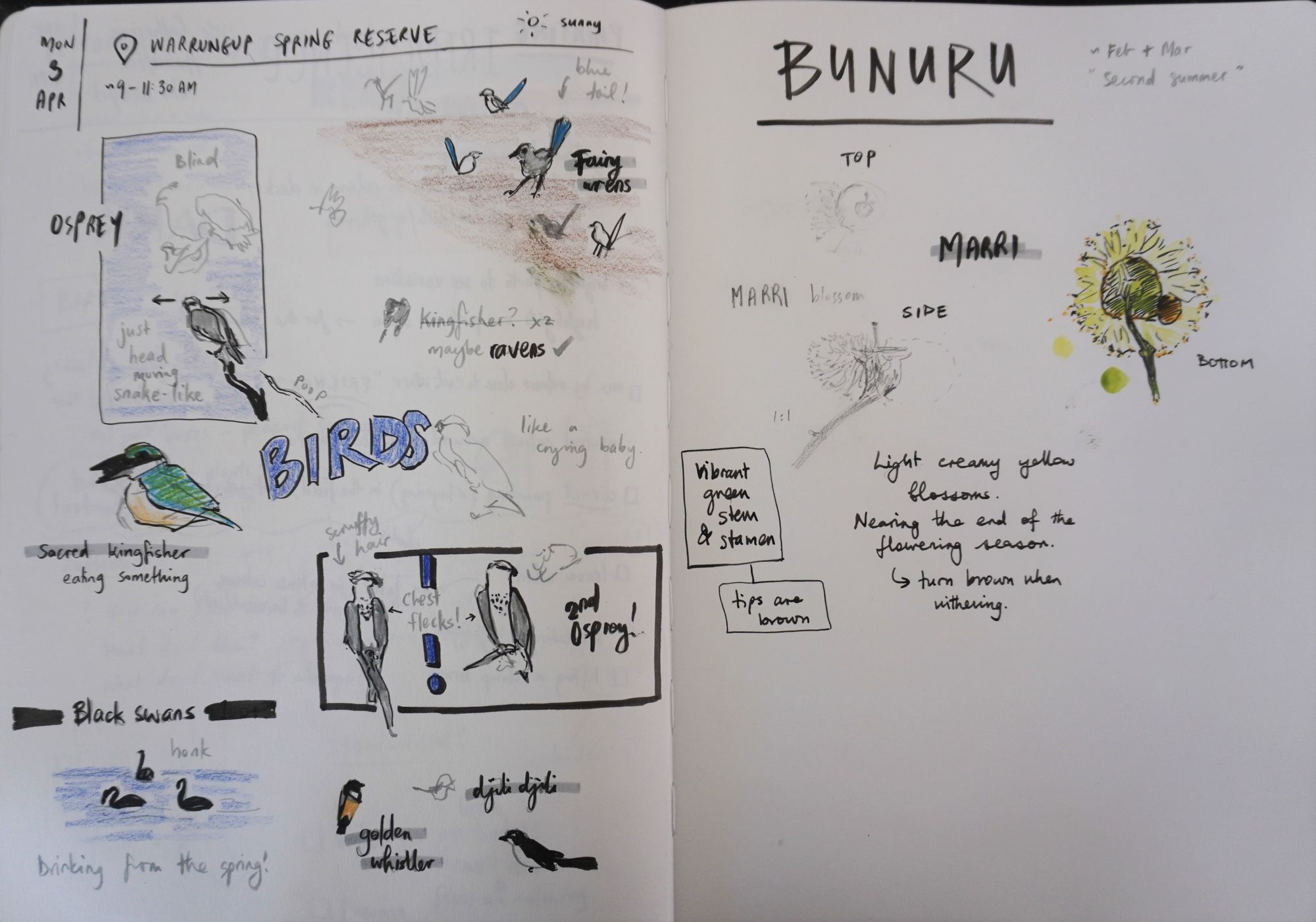
I'm always sad when summer ends (it's my favourite season), but the cool mornings have certainly begun now. I look forward to the next season's changes but also to the return of Bunuru next year when I can once again bask like a lizard under the hot sun, fend away the flies and dip in the ocean to cool off.
Discussion
When you look out at nature now, what colours dominate?
Try this: Go for a walk and notice the colours around you. When you get home you can add some colour spots and describe them in your nature journal, perhaps on a map of your walk.

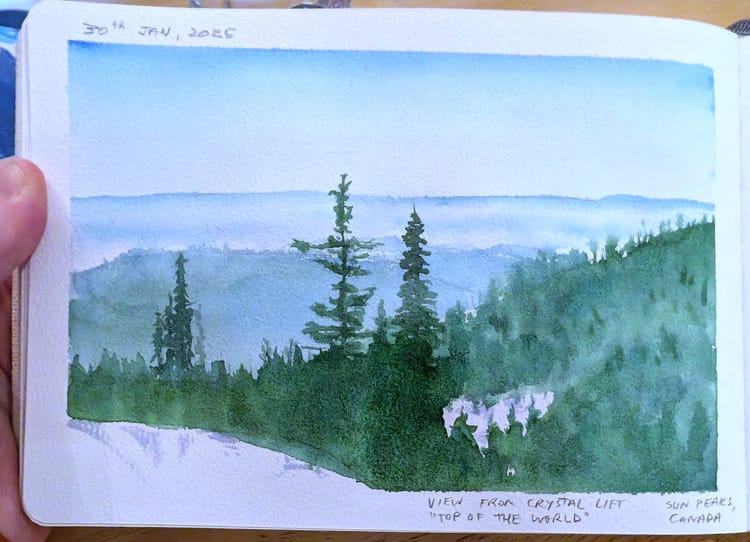
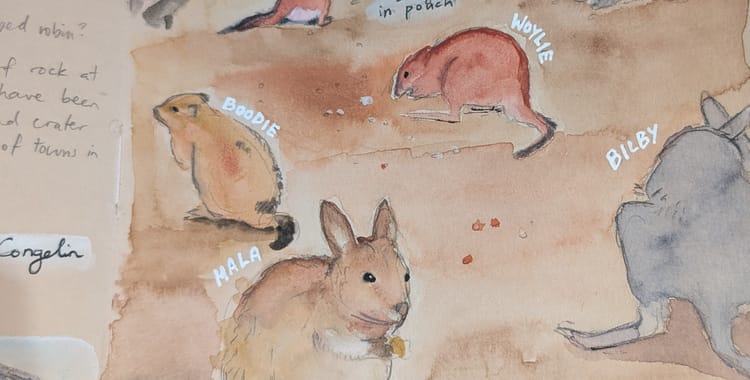
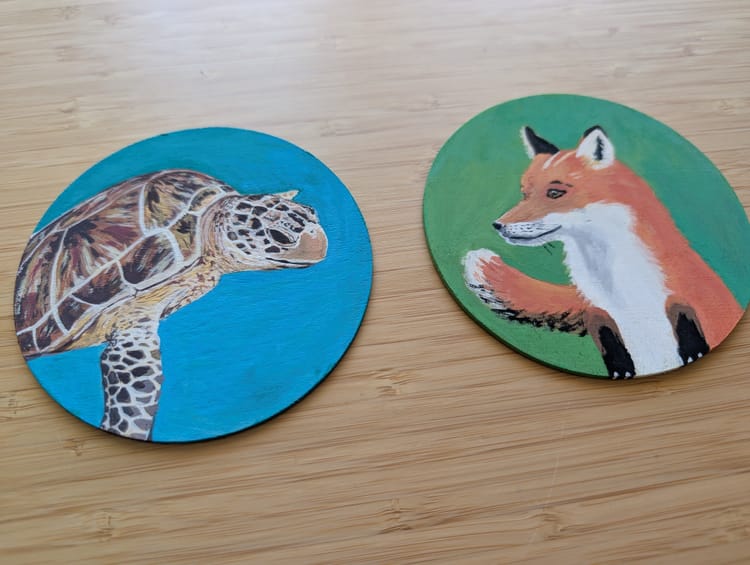
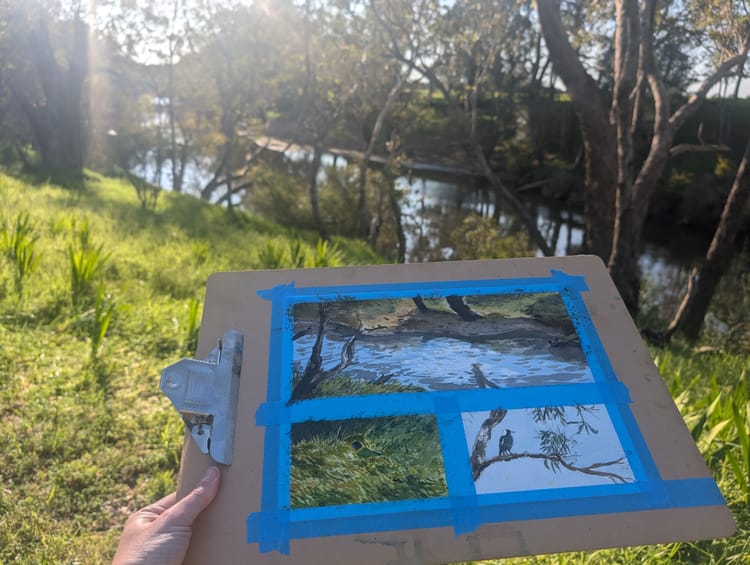
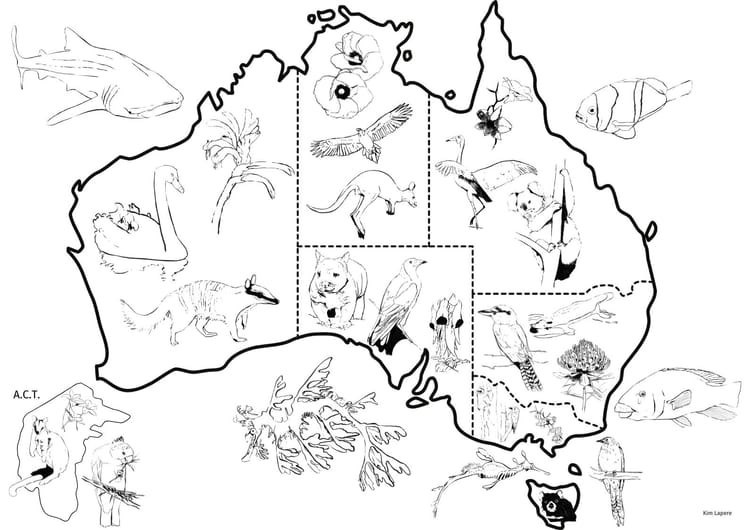
Member discussion